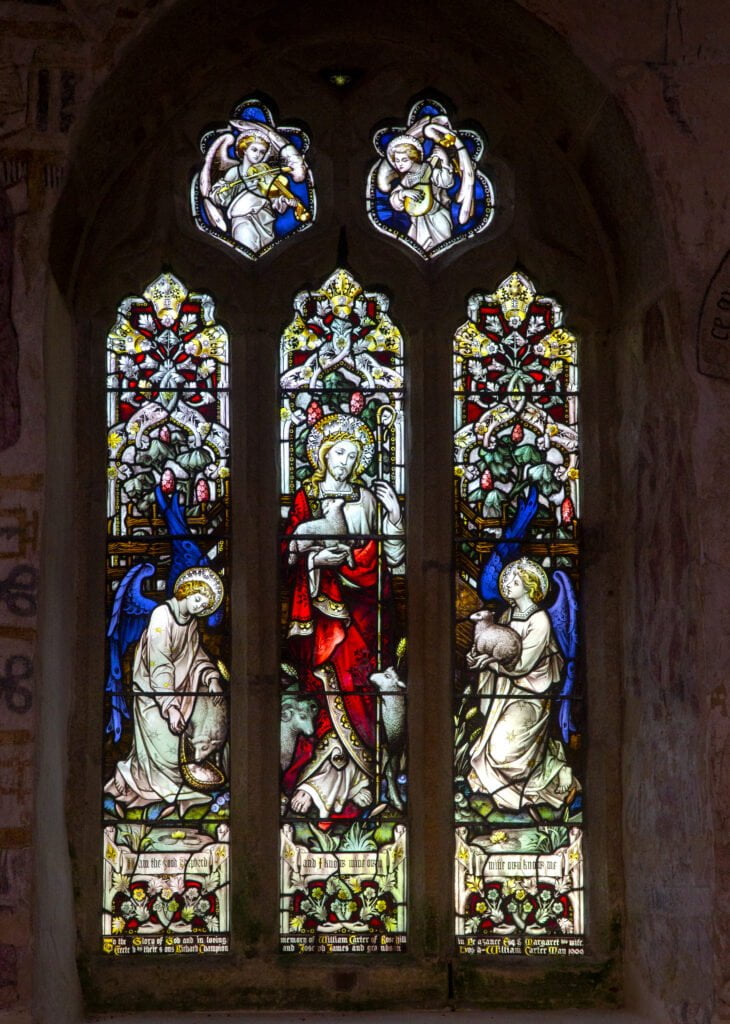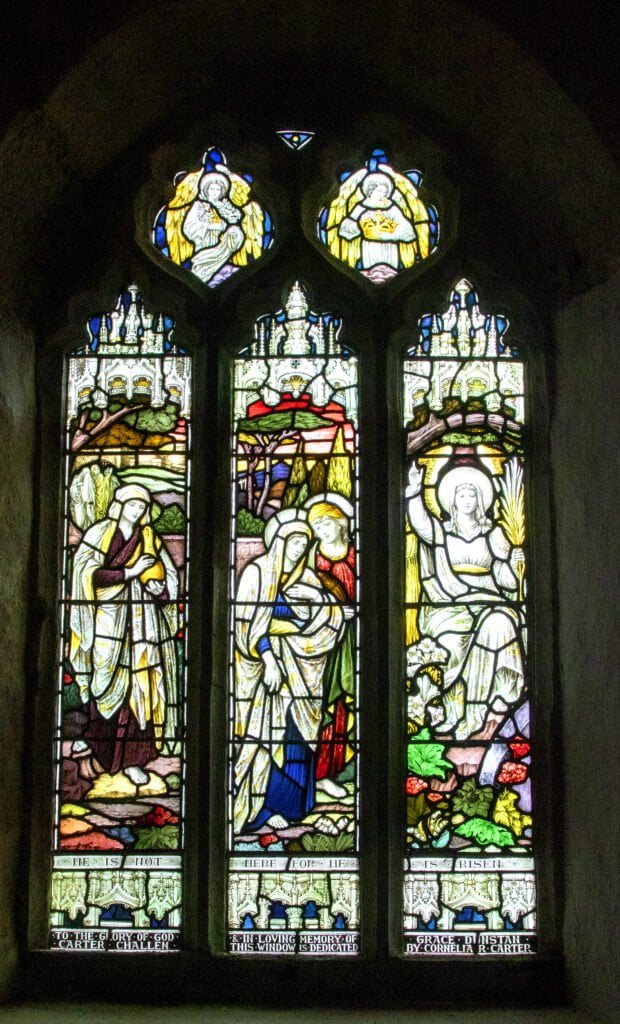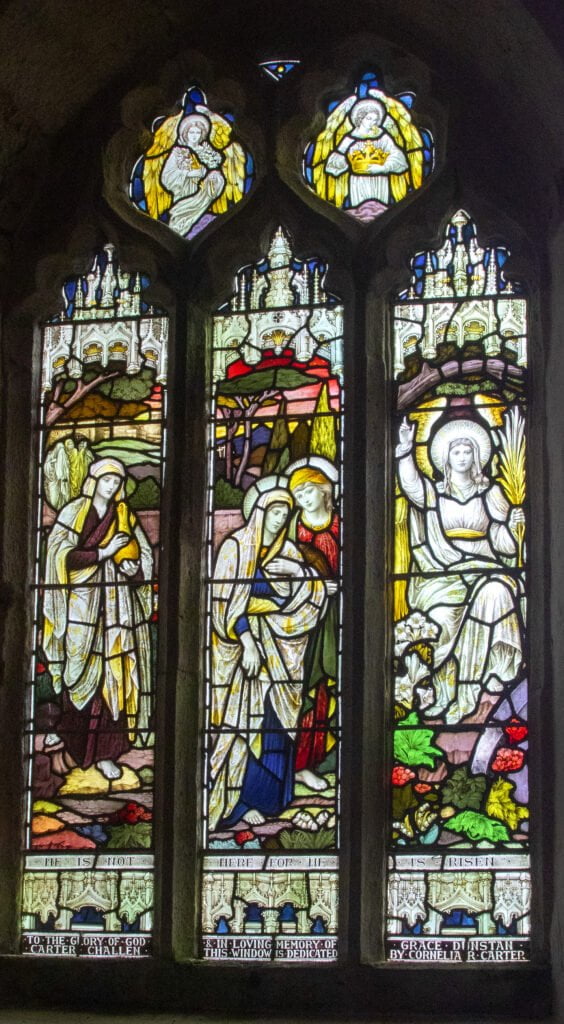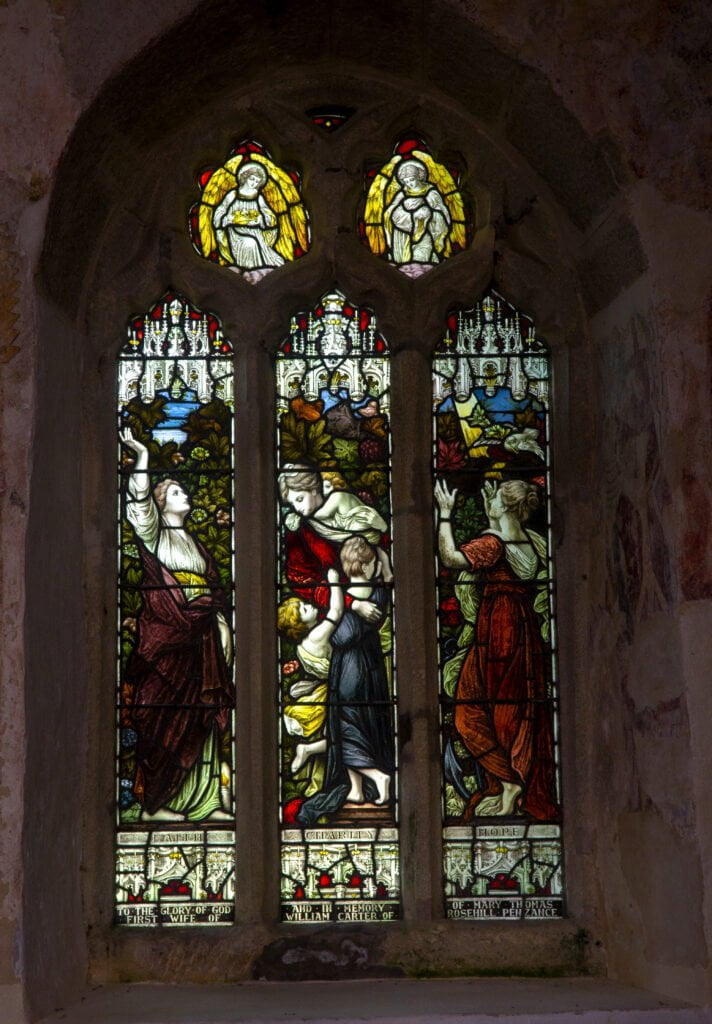Just four miles from Helston, on the main road to Penzance, you will pass through the village of Breage. On your right, as you come up the hill to Breage you cannot fail to notice the church. The 66ft. high 15th century tower with its pinnacles and buttresses, look unusually decorative for a Cornish church.
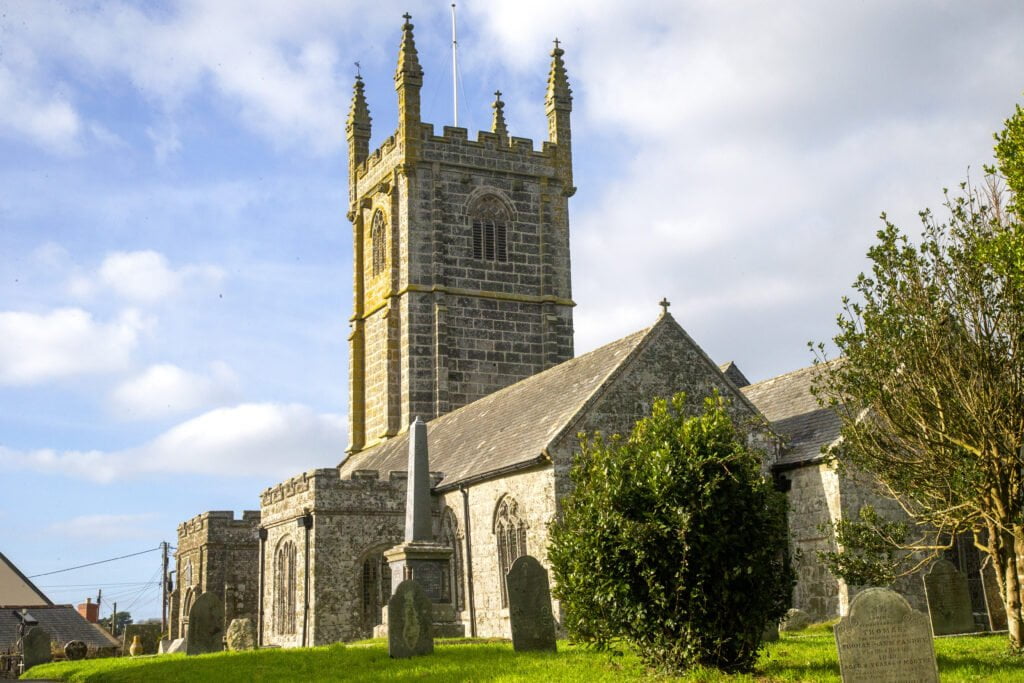
A flight of steps leads to the southern entrance, which has two seats built into the wall on either side. On the granite from which they are made can be seen the date 1756. To the right of the south porch is a Celtic cross. This is thought to be a preaching cross, and is unique, because unlike any other cross in Cornwall, it is made of sandstone. It is thought to mark the first settlement of St. Breaca who founded the church here at the end of the 5th century.
Before entering by the south porch, take a look at the panoramic view right out to the Lizard Point – truly magnificent on a clear day. The porch itself is worthy of special notice with its unusual carvings and beautiful arches. It also has a sundial dated 1795.
It is a great surprise to fmd modern all-glass doors facing you as you open the porch door, but you are back in the 15th century again when you see the main door ahead – a massive piece of oak, studded with iron nails, and in an arch framed in a square, as are all the doorways of this church.
On entering you will be amazed at the spaciousness, and the mixture of old and new. The Christening font on your left is of new granite. The window beside it, looking south, I liked best of all the windows in the church. I was surprised to find just how modern it was – dedicated on Easter Day, 1960. I think it was the “uncluttered” design which caught my eye. It shows the patron saint, St. Breaca in the centre light, with a sailing ship on her right and a reproduction of the church on her left.
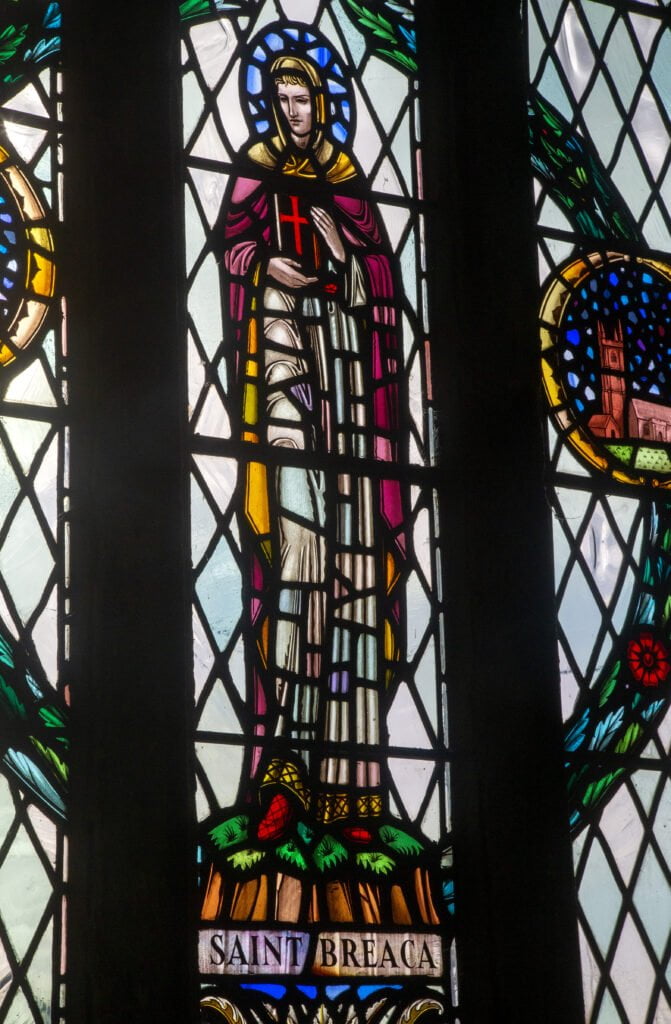
The window looking west above the font is beautifully coloured and was sub-scribed by the public to commemorate the marriage of Edward VII and Queen Alexandra.
Of course, Breage church is famous for its wall paintings, and the largest are to be seen in the north aisle. Directly opposite the door we see St. Christopher carrying the Christ child. Next to him is Christ surrounded by emblems of trades. In the window splays we see St. Hilary, St. Gregory, and St. Corentine. These were all painted about 1470.
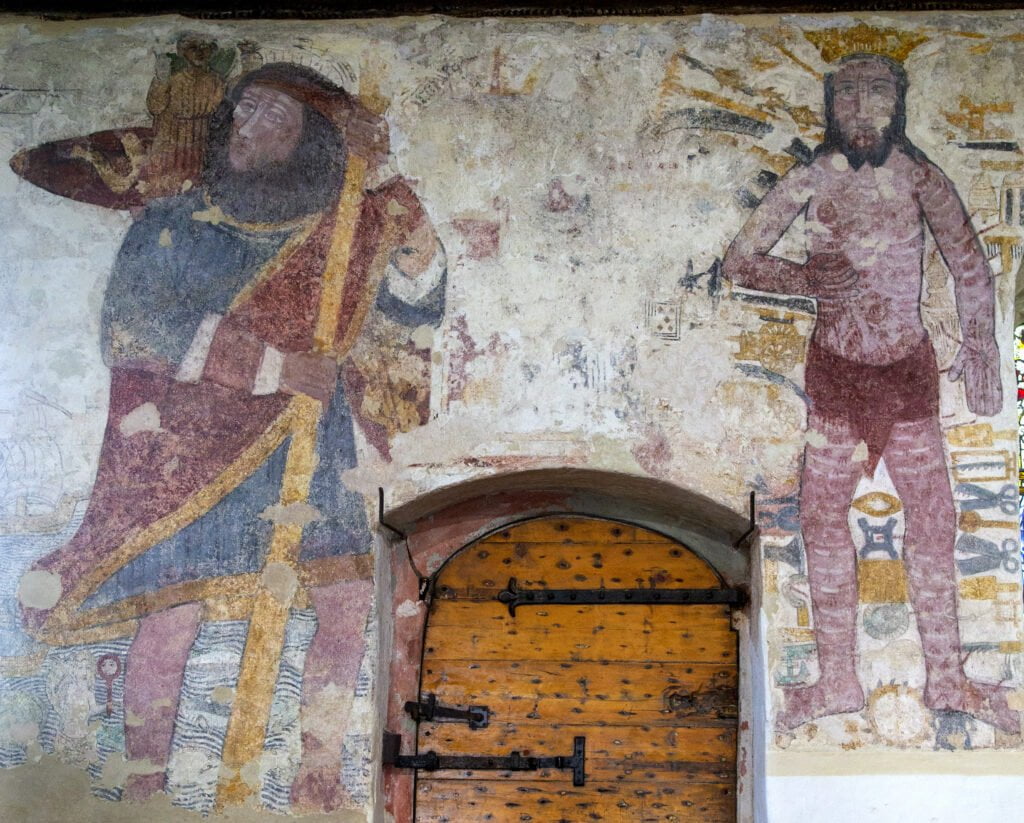
The south aisle carries other paintings, and east of the door is a king in coronation robes and holding an orb. It is thought to be Henry VI, who was murdered about the time the painting was done, and some think it is Prince Bishop St. Germoe, a relative of St. Breaca. This painting was not discovered until 1955. In the windows of the south aisle are two more paintings – St. Thomas and St. Giles. A most unusual painting was also found in 1955 at the eastern end of this aisle. It is really two paintings: one on top of another. The lower one shows a brocade pattern, which may form part of a robe. The main colour of most of the paintings is a rusty red, which shows up very well against the white walls.
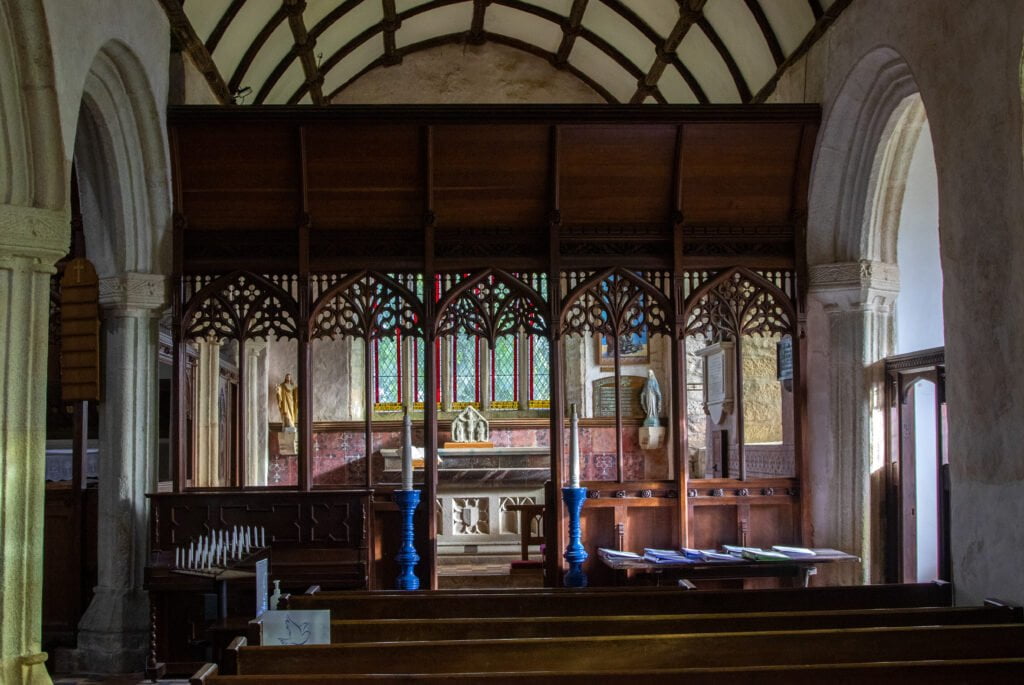
The south transept is a most attractive children’s chapel. Although it is small, the large south and east windows make it exceptionally bright and cheerful. The whole of the western wall is taken up with a large board on which is written a letter of thanks from King Charles I, thanking people for their support during the Civil War. The Godolphin Chapel is at the eastern end of the south aisle and was originally the burial place of the Godolphin family, many of whom lie beneath its floor. Suspended from the ceiling are three helmets belonging to the family, and one can imagine these being worn at some medieval battle. The Godolphin family seat is still at the village of Godolphin only two miles away. The carvings of the roof are very beautiful, and although 15th century are still in good condition. A carved stone on the windowsill is dated 14th century and represents the Crucifixion.
If you stand in the nave and look towards the chancel, you will see one of the finest views in the church. Maybe the reredos makes it a little dark. but the whole setting is magnificent. At a close view you will see the carving of the Adoration of the Magi, which is truly beautiful. I went behind this screen to see the window which it hid. A lovely window of Jesus blessing children, which was given in memory of an 8-year-old child who died in 1854. The painted bosses in the roof of the chancel show various Emblems of the Passion.
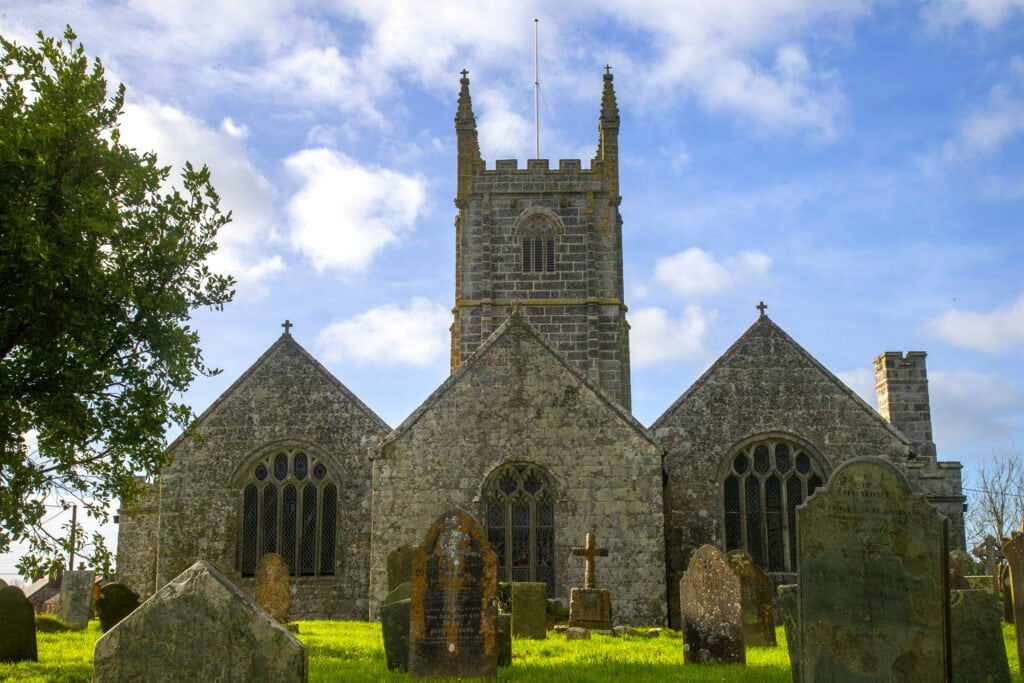
The north chapel accommodates the organ; rather unusual because the keyboard possesses black naturals and white flats. In the western corner of the north aisle is a large stone. It is a Roman milestone and bears the name Marcus Cassianus Postumum, Emperor of Gaul and Britain, AD 260 – 268. It is the only stone bearing his name which exists in Britain today.
The clock in the tower was given in 1909 by William Carter of Philadelphia, U.S.A., son of William Carter of Rosehill, Penzance. Originally there were four bells in the tower, but in 1776 they were melted down and re-cast into one huge bell. This was one of the largest in the country, and the clapper may still be seen by the tower arch. In 1928 this bell was again melted down and (through the generosity of the Carter family) the present peal of eight bells was cast. I should imagine the view from the top of the tower is magnificent, but the very steep stairway put me off finding out!

